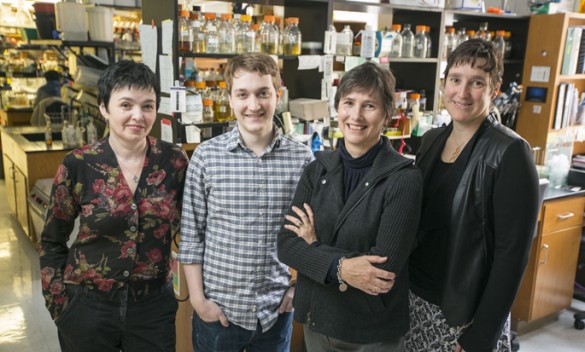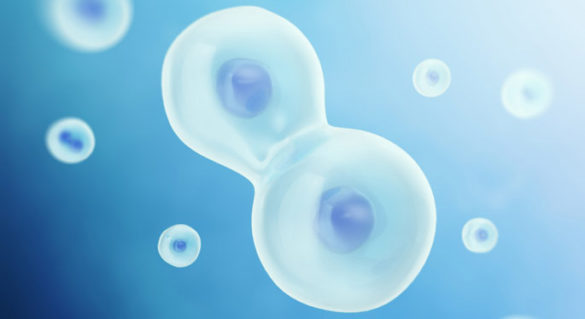
A family of proteins with critical roles in cell division, synaptic transmission and cell migration don’t all function the way scientists thought they did, according to two new studies led by Vanderbilt researchers.
Instead of bending membranes into tubes, these “F-BAR” proteins — named for a domain they share — appear to form patches on the membrane where the cell’s internal actin cytoskeleton and other proteins can bind and exert force on the membrane.
“It was thought that the F-BAR domains of all these proteins, which are banana-shaped, bind the cell membrane and deform it,” said Kathleen Gould, Ph.D., Louise B. McGavock Professor of Cell and Developmental Biology. “We found that many don’t deform the membrane on their own; they just form a sort of molecular Velcro to link the actin polymerization machinery to the plasma membrane.”
The findings, published in two papers in Developmental Cell and Cell Reports, challenge the dogma that the membrane-bending effects of F-BAR proteins are necessarily important to their function and might even suggest that these effects are an artifact of in vitro studies, Gould said.
Gould and her colleagues use the fission yeast Schizosaccharomyces pombe to study cytokinesis — the separation of a parent cell into two daughter cells.
The F-BAR protein Cdc15 is required for S. pombe cytokinesis and has roles at the contractile ring that forms and then contracts to split the parent cell in two.
In studies led by graduate student Nathan McDonald, the researchers showed that Cdc15 binds to membranes but does not bend them in vitro.
They found that in yeast, the ability of Cdc15 to bind membranes and oligomerize — the joining together of individual Cdc15 molecules into chain-like filaments — was critical for its role in cytokinesis.
The researchers also demonstrated that six human F-BAR proteins were not able to bend membranes in vitro.
Like Cdc15, at least two of these proteins with roles in cell migration required oligomerization at the membrane for their cellular function.
In contrast to Cdc15, a related yeast F-BAR protein named Imp2 was able to bend membranes into tubules in vitro, the team found.
The researchers collaborated with Craig Vander Kooi, Ph.D., at the University of Kentucky, to solve the crystal structure of the Imp2 F-BAR domain, which gave them insight about how to alter the protein to study its roles.
They found that mutations in Imp2 that interfered with membrane binding also disrupted cytokinesis in S. pombe. Mutations that interfered with tubule formation and oligomerization, however, did not impact cytokinesis.
“We were lucky to find mutations that allowed us to tease apart membrane binding and tubulation-oligomerization, and it was because we had a beautiful crystal structure to guide us,” Gould said.
It’s possible that F-BAR proteins with other roles, for example in endocytosis (the formation of vesicles that bring material into the cell), do bend membranes to achieve their functions, Gould said.
“We have to be open-minded and test our models in vivo. Of course using yeast as a model organism allows us to do that with ease,” she said.
Understanding the fundamental mechanisms that control cell division is critical to efforts to discover how that control is lost in cancer cells and to develop new strategies for treating cancer.
In addition to Gould, McDonald and Vander Kooi, authors of the two studies include Melanie Ohi, Ph.D., Yoshimasa Takizawa, Ph.D., Anna Feoktistova and Ping Xu. This research was supported by the National Institutes of Health (grant number GM101035).














